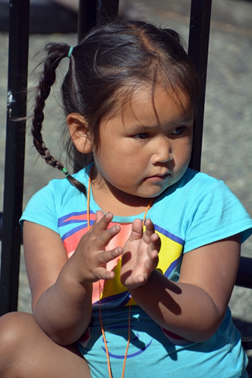8.4: Writing Skills- The Compare/Contrast Paragraph
- Page ID
- 104452
What Is a Compare/Contrast Paragraph?
A compare/contrast paragraph is one which shows either the similarities or the differences between two things. A compare paragraph gives similarities and answers the question, “What do they have in common?” A contrast paragraph gives differences and answers the question, “How do they differ?” The paragraph below is an example of a contrast paragraph.
My life in Canada is very different from my mother’s life in our old country. The main difference is that, as a girl, I have access to education in Canada. I am in high school now, and I have studied a range of subjects: English, math, chemistry, biology, physical education, music, and lots more. My mother had very little formal education, and most of her learning was from traditional books at home. Another difference is that I have more freedom than my mother had. I can go out with my friends, see a movie, or play soccer. My friends are both girls and boys. I am even learning to drive, so I will be more independent. My mother could not do those things. She had to stay at home, help her mother, and learn to cook traditional food. She certainly could not go to a movie with a boy! Finally, I know there will be a big difference in the career opportunities open to me later. After high school, I want to go to college and train to be a paramedic or a firefighter. My mother did not have those opportunities; as a girl, she was not expected to have a career, and certainly not the kind of career I want to have. She got married when she was very young, and she has never had a paying job. I’m not saying my life is better than my mom’s life; I’m just saying that living in a new culture makes a huge difference.

What Makes a Good Compare/Contrast Paragraph?
In Unit 6, you learned about writing a good cause/effect paragraph. Much of the same information applies here.
- It is about either similarities or differences. In one paragraph, you cannot address both in detail. You should say early in your paragraph whether you are comparing or contrasting.
- It shows similarities or differences between two things that already have some kind of connection. In the paragraph you have just read, the writer compares her own teenage years to those of her mother. This is a logical comparison to make. You could also compare two places, two kinds of music, two people, two religions, two systems of government, and more. Don’t compare or contrast things that have no logical connection.
- It is about a topic that is easily managed in one paragraph. The example paragraph addresses a topic that is small enough to be covered in one paragraph. This is much more manageable than, say, a paragraph comparing Canadian culture and another culture.
- It is sufficiently detailed. As with all good paragraphs, don’t make your reader guess what you want to say. Give examples.
Steps for Writing the Compare/Contrast Paragraph
- As always, your writing should begin with some brainstorming. Think about your topic—what do you want to say about it? Use a mind map to start to collect some ideas. Make sure you are comparing or contrasting two things that already have a connection. Be sure whether you are comparing them or contrasting them.
- Make a plan for your paragraph. Make sure you are presenting your ideas in a logical order.
- Write your first draft. Don’t worry about getting everything perfect at this stage; just get your ideas on paper. Make sure you have included enough detail.
- Revise your draft. Follow the ARMS checklist you learned in Unit 1 (Add, Remove, Move, and Substitute). You may want to use words like Firstly, Secondly, and Finally to introduce your various points.
- Edit your paragraph and write your final draft. Now that your ideas are in place, you can focus on grammar, spelling, word choice, and punctuation.
You Try It!
Look at the following examples of paragraphs that show similarities or differences. Answer the questions below each paragraph.
Paragraph 1

The most widely spoken Indigenous language in Canada is Cree, with around 100,000 speakers; about half of them speak Cree at home. There are several important differences between the grammar of Cree and the grammar of English. Firstly, Cree verbs are more complex than English verbs. Often a whole sentence can be expressed in one or two words; a lot of meaning is included in the form of the verb. For example, the English sentence I ate a lot of caribou is expressed in Cree as Nichii mishtamuuwaatihkwen. Because so much meaning is included in the verb, Cree speakers often leave out pronouns such as he or we. Secondly, Cree nouns are divided into two groups: those that are living (animate) and those that are not living (inanimate). These groups form their plurals in different ways. Animate nouns add –ich to make plural forms, so awaash (child) becomes awaashich (children). Inanimate nouns form their plurals with –h, so tehtapuwin (chair) becomes tehtapuwinh (chairs). Finally, there are no separate possession words in Cree, such as my, your, his, her, and so on. Instead, ownership is included in the noun. My book in Cree is nimasinahiikan, your book is chimasinahiikan, and their book is umasinahiikanawaau. Despite these differences, Cree is not a difficult language to learn; in fact, it may even be easier than English.
Source of information: http://docplayer.net/31959589-Compar...d-english.html
1. What is the writer contrasting here?
________________________________________________________________________
________________________________________________________________________
2. What points of contrast does the writer give?
________________________________________________________________________
________________________________________________________________________
________________________________________________________________________
3. Is another language spoken in your family? Or did your ancestors speak a different language? If so, what are some of the differences between this language and English?
_______________________________________________________________________
________________________________________________________________________
Paragraph 2
Two of the largest religions in the world are Christianity and Islam. People often think these religions are very different, but there are actually some similarities between them. The first similarity is that followers of both religions worship only one god, and this god is the source of rules that must be followed. These include prohibitions on killing and stealing, and the requirement to worship on a particular day of the week. A second similarity is that both religions have a holy book. For Christians, this is the Bible; for Muslims, the sacred text is the Qur’an. Both books provide guidance for followers of the religion with regard to suitable behaviour. A third similarity is that both religions have a long history of pilgrimage. All Muslims are required to travel to the city of Mecca in Saudi Arabia at least once in their lives. Christians do not have this exact requirement, but many of the great cathedrals in Europe have long been sites of pilgrimage. A final similarity, and perhaps the most important, is that both religions promote peace. While the conflict in the Middle East receives a lot of attention in the news, Muslims are quick to point out that Islam, like Christianity, is inherently a peaceful religion. Of course, there are differences between Christianity and Islam, such as the role of women in society and Islam’s ban on eating pork and drinking alcohol. However, it is worth remembering that the two religions have more in common than people often think.

1. What point is the writer making here? What is the author’s purpose in writing this?
________________________________________________________________________
________________________________________________________________________
2. What similarities does the writer describe?
________________________________________________________________________
________________________________________________________________________
________________________________________________________________________
3. What differences does the writer mention?
________________________________________________________________________
________________________________________________________________________
4. Think of another religion. How does it compare to either Christianity or Islam?
________________________________________________________________________
________________________________________________________________________
________________________________________________________________________
In Bring It Together: Writing Task you will write a paragraph comparing/contrasting two aspects of your own life. Use what you have learned in this section to help you.

